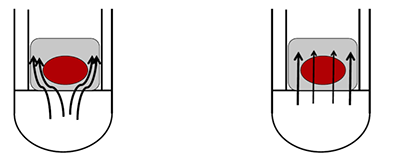REACTOR SAFETY TECHNOLOGIES
Background
Soon after the March 11, 2011, earthquake and subsequent tsunami in Japan caused the multi-unit accident at the Fukushima Daiichi nuclear power plant, the Department of Energy’s Office of Nuclear Energy established an activity to understand ongoing events at the plant and to respond to various requests from within the U.S. government and from industry and Japanese organizations. This activity has evolved into a research and development program that supports implementation of Fukushima Daiichi lessons learned, with a focus on delivering beyond design basis accidents research and development results that are of benefit to the nuclear industry.
Research and Development Purpose and Goals
To further enhance the safety of existing nuclear power plants, the Reactor Safety Technologies Pathway will expand beyond areas specifically related to the Fukushima accident forensic analysis to incorporate lessons learned from the Fukushima accident into commercial nuclear power plant issues. The safety enhancements expected to result from this program will apply to both prevention and mitigation of accidents (e.g., mitigating strategies for long-term station blackout, venting strategies for beyond design base accidents conditions).
The goals of this effort are to:
Identify opportunities to improve nuclear power plant capabilities to monitor, analyze and manage beyond design base conditions to prevent or mitigate severe accidents.
Use and improve beyond design base accident progression analyses using existing models and simulation codes to aid in accident prevention and mitigation actions.
Inform and engage with Japanese and international partners in the ongoing Fukushima reactor data collection effort as well as the future reactor inspection effort, to optimize understanding of severe accidents and to reduce uncertainty around accident progression, for the benefit of U.S. nuclear safety analysis capabilities.

Shown to the right is an illustration of different flow geometries (MAAP left and MELCOR right) through a degraded reactor core, where the MAAP model predicts the formation of a blockage causing steam flow to bypass the degraded core materials in contrast to the MELCOR model where the blockage is porous and allows steam flow to pass through the degraded core materials.
Fukushima Inspection, Preparation, and Planning
Coordinate with international partners to develop a priority list of forensic activities for Fukushima Daiichi reactor inspections.
Accident-Tolerant Components
Perform research and development on systems, structures, and components with the potential to prevent or mitigate beyond design basis accidents.
Severe Accident Analysis Support
Perform analysis using existing computer codes to provide information, knowledge, and insights on severe accident phenomenology.